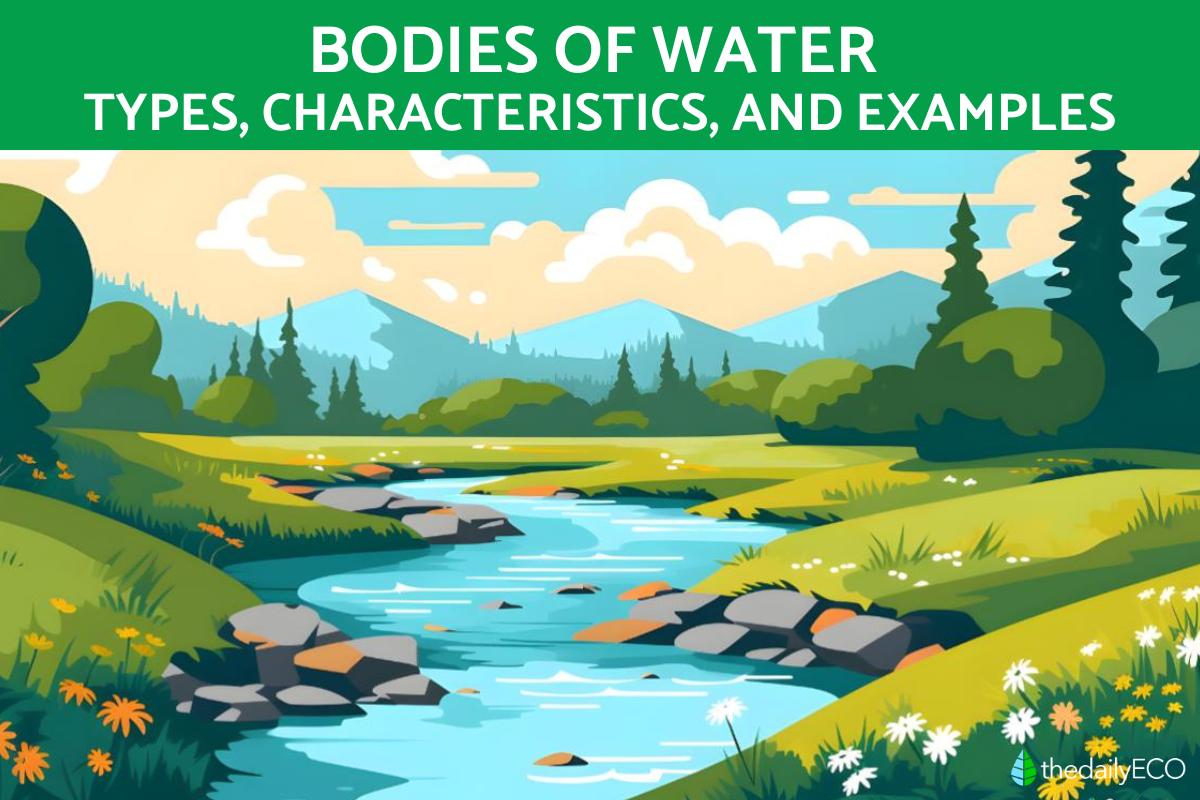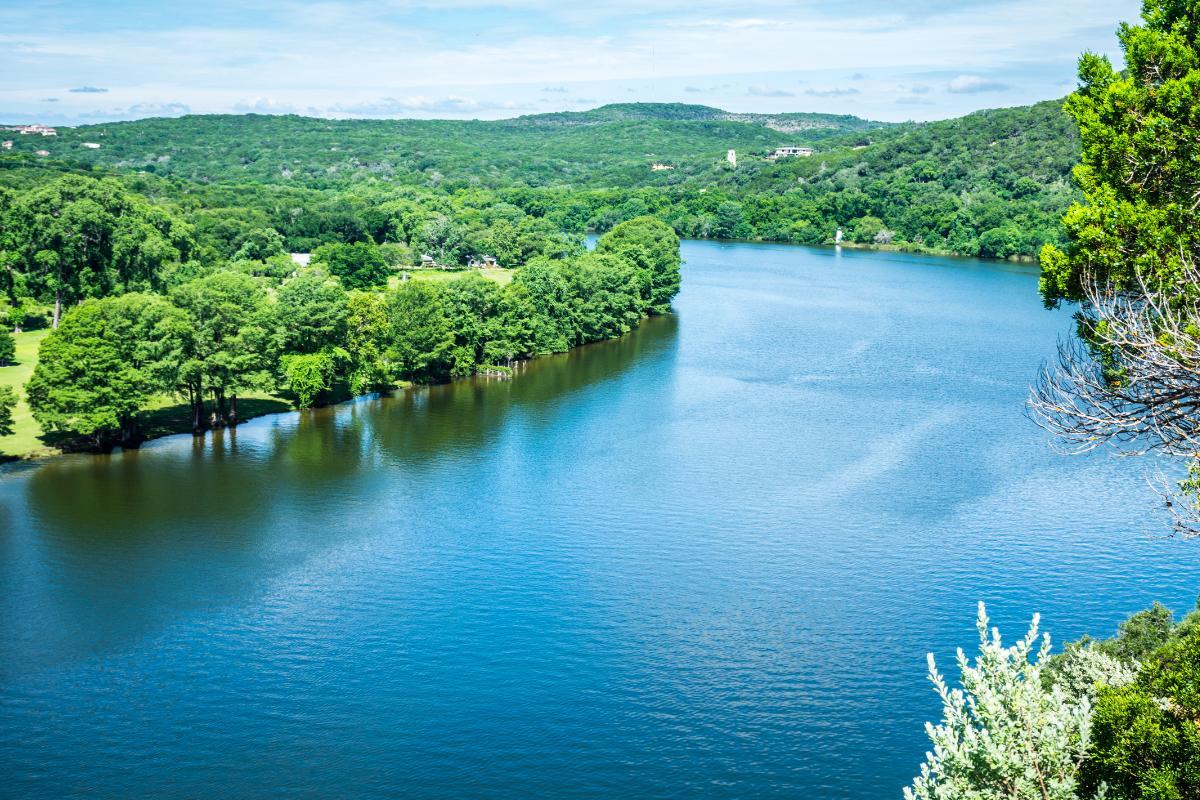What Are Bodies of Water?


Bodies of water, ranging from expansive oceans to winding streams, are crucial elements of our planet. They are categorized by their size, origin, and physical properties, and play a fundamental role in sustaining life on Earth. These bodies of water are integral to ecological health, human well-being, and economic development. Effective conservation and management of these water sources are essential to preserving their vital functions and ensuring their continued benefits to all forms of life.
This article by thedailyECO explores what bodies of water are, their types, characteristics, and their vital role in our ecosystem.
What are bodies of water?
Bodies of water are accumulations of water found in the Earth's crust and can be classified as surface water or groundwater. They vary greatly in size and shape, and can be either natural or artificial. Key examples include oceans, rivers, lakes, seas, and ponds.
These bodies of water are crucial for sustaining life on Earth. They support diverse ecosystems by providing habitats for numerous species, regulate climate patterns, and serve as essential sources of water for drinking, agriculture, and industry. Additionally, they play a significant role in the water cycle, contributing to processes such as evaporation and precipitation.
Want to explore more about the vast expanses that cover our Earth? Discover what makes sea and ocean waters unique in our follow-up piece.

Types of water bodies
There are various types of water bodies, each with distinct characteristics and functions:
Oceans
Oceans are the largest bodies of water on Earth, comprising five main ones: the Atlantic, Pacific, Indian, Arctic, and Southern Oceans. Covering the majority of the planet's surface, oceans are crucial for regulating global climate, producing oxygen, and sustaining marine biodiversity.
Seas
Seas are smaller bodies of saltwater connected to oceans, often partially enclosed by land. Examples include the Mediterranean Sea, the Caribbean Sea, and the Baltic Sea. Seas are vital for global trade, fisheries, and regional climate regulation.
Rivers
Rivers are flowing bodies of freshwater that travel from higher elevations to lower areas, eventually emptying into oceans, seas, or lakes. Notable rivers such as the Amazon, Nile, and Mississippi are essential for transportation, agriculture, and providing drinking water to millions.
Lakes
Lakes are bodies of freshwater or saltwater surrounded by land, which can be either natural or artificial (reservoirs). They vary greatly in size, from small ponds to vast expanses like Lake Superior in North America or Lake Baikal in Russia, the world's deepest lake. Lakes are important for biodiversity, water resources, and recreation.
Ponds
Ponds are smaller and shallower than lakes, and can be natural or man-made. They are often used for agricultural purposes, fish farming, or as decorative features in landscapes. Despite their size, ponds can support diverse aquatic ecosystems.
Lagoons
Lagoons are typically smaller and shallower than lakes and are often found along coastlines. They are connected to seas or oceans through narrow channels. Coastal lagoons are crucial for marine life and often serve as buffers against storm surges.
Springs
Springs are natural sources of water that emerge from the ground, forming small streams or ponds. They can produce freshwater or mineral water and are prized for their purity and role in replenishing surface water bodies.
Wetlands
Wetlands are areas where water is present at or near the surface for much of the year. This category includes marshes, swamps, and bogs. Wetlands are vital for biodiversity, water purification, flood control, and providing habitat for a variety of species.
Aquifers
Aquifers are underground layers of porous rock or sediment that store and transmit water. They are accessed through wells or springs and are crucial for drinking water, agriculture, and industrial uses, especially in regions with limited surface water. Aquifers also help regulate ecosystems and provide water during dry periods.
Interested in how bodies of water impact our environment? Explore the critical issue of water stress and its effects in our next article.

Importance of bodies of water
Bodies of water play a multifaceted role, supporting ecosystems, regulating climate, providing resources, and shaping human history. Let us take a closer look:
- Bodies of water provide diverse habitats for a wide range of species, from microscopic organisms to large mammals. They are hotspots for biodiversity, offering environments for various fish, birds, amphibians, and plants.
- Oceans and large lakes absorb and store heat, helping to regulate global temperatures. They influence atmospheric temperatures and precipitation, impacting local and global weather patterns.
- Bodies of water are integral to the water cycle, contributing to evaporation, cloud formation, and precipitation.
- Freshwater bodies are crucial sources of drinking water for people and animals.
- Rivers and lakes are used for irrigation, supporting agricultural productivity.
- Bodies of water are used in various industrial processes, such as cooling and transportation. Furthermore, flowing water is harnessed to generate electricity.
- Bodies of water offer recreational opportunities like swimming, boating, fishing, and tourism, contributing to the economy and quality of life.
- Wetlands and natural floodplains act as buffers, reducing the risk of flooding.
- Wetlands and riparian zones help filter pollutants from runoff, improving water quality.
- Waterways have played a crucial role in trade, exploration, and settlement, shaping human civilization.
In conclusion, bodies of water are indispensable to our planet.

How water is distributed on Earth
On Earth, the vast majority of water is saltwater, with only a small fraction being freshwater. Approximately 97.6% of the Earth's water is saltwater, found in oceans, seas, and salt lakes. While this represents a significant potential resource, the process of desalination to make it suitable for human consumption is costly, and there are only a limited number of desalination plants globally.
Freshwater makes up just 2.4% of the Earth's water, but even less is readily accessible for human use:
- 1.9% is locked in glaciers and ice caps.
- 0.5% is stored in groundwater.
- Only 0.02% is available in surface waters like lakes, rivers, and reservoirs.
- 0.01% is found in the soil.
- 0.001% is present in the atmosphere.
- A very minimal percentage is contained within living organisms.
In total, only 0.025% of the Earth's water is drinkable. Despite the fundamental right to safe drinking water and sanitation, approximately three out of ten people worldwide lack access to clean drinking water, and six out of ten do not have access to safe sanitation. Ensuring these basic rights requires services that are accessible, safe, and culturally appropriate, yet many individuals remain marginalized due to factors such as gender, ethnicity, age, health status, or poverty.
Did you know the vast majority of Earth is covered in water? Learn more about the global distribution of water in our upcoming piece.
If you want to read similar articles to What Are Bodies of Water?, we recommend you visit our Environment (other) category.
- TOPIC 3 «The Waters of the Planet». WATER CYCLE. Blog by Miguel Ángel Suárez Umpiérrez. Government of the Canary Islands. Available at: https://www3.gobiernodecanarias.org/medusa/ecoblog/msuaump/sociales/tema-3-las-aguas-del-planeta/
- Bodies of water. Definition and characteristics. (October 7, 2018). About. Available at: https://www.acerca.org/de/cuerpos-de-agua-definicion-y-caracteristicas/








